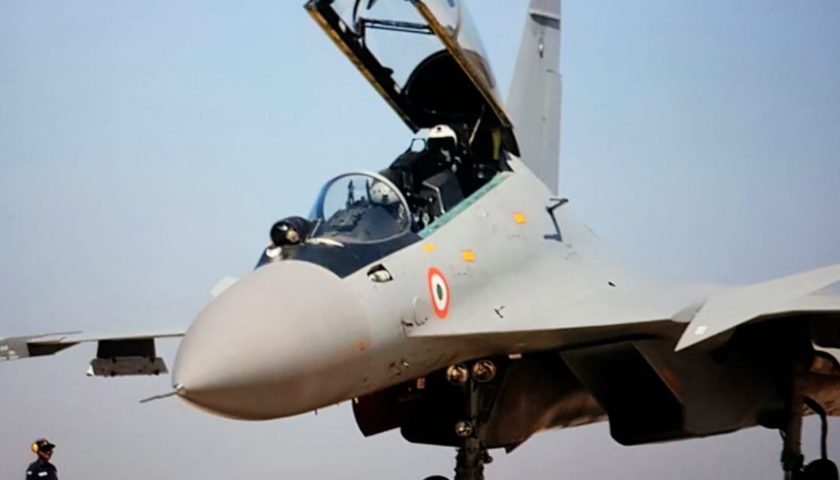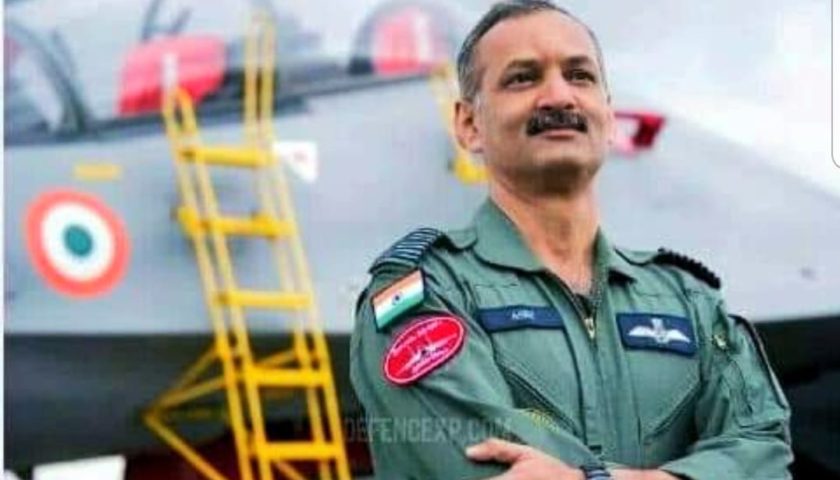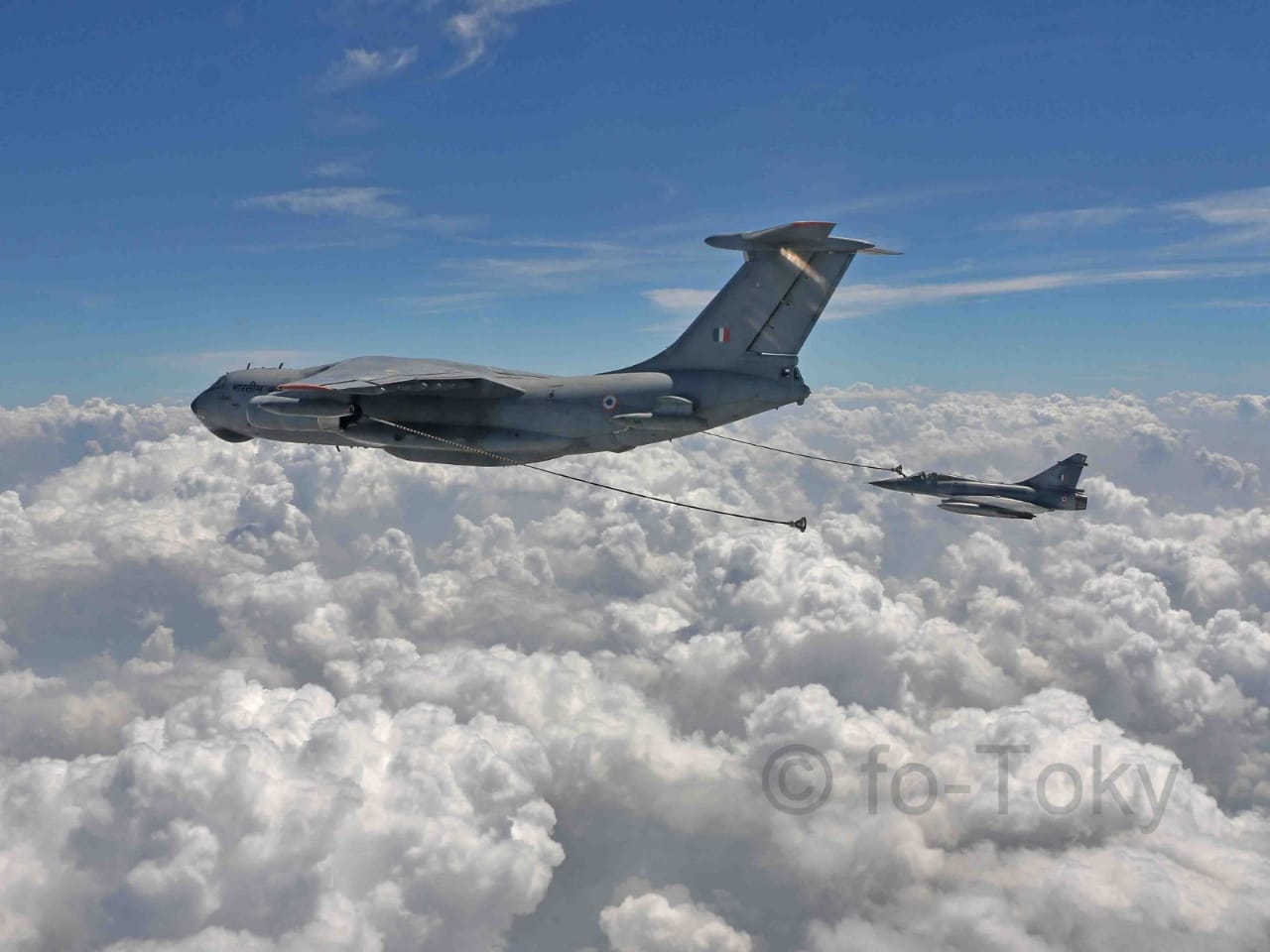The flight endurance record though no longer recognized used to be the longest amount of time an aircraft of a particular category spent in flight without landing. It can be a solo event, or multiple people can take turns piloting the aircraft, as long as all pilots remained in the aircraft. The limit initially was the amount of fuel that could be stored for the flight, but aerial refuelling extended that parameter. Flying modern fighter aircraft requires a high degree of physical and mental fitness to withstand the stresses that are placed on the pilot with extra consideration for high-performance aircraft capable of pulling multiple G-forces and uncertainty of combat environment and associated stress.
In this post, Gp Capt Ashutosh Srivastav (Retd) will give us a detailed account of various aspects which are taken care of during such long duration fighter aircraft missions. Over to you Sir.

Recently three Rafael aircraft of the IAF carried out a nonstop ferry from France to India covering 3700 NM with three aerial refuellings. This is a silent projection of capability and strategic reach. This refreshed my memories of the long duration mission on Su-30MKI, which was close to 10 hours, we flew back in 2005 including weapon delivery after eight hours of flying. The objective of our mission also included validation of the aircraft systems as certified by OEM. It was a two aircraft mission. To set the scene in simple terms, imagine sitting in a chair, read tied to, for 10 hours at a stretch with the only luxury of stretching your legs. Now while you are in this chair you must carry out aerial refuelling, execute mission inside combat zones, ensure accurate weapon delivery, survive in a hostile environment, and recover safely at base. A successful long-duration mission requires extensive planning in terms of suitable routes, aerial refuelling brackets, aeromedical aspects, tactical actions, and CRM. As simple as these words might sound, the planning requires days of work. To give you a brief outline, I would like to share my experience of long-duration mission.
Route Planning.
Ideally, route planning is done from the target area and time over target. It has three parts, first is the routing in own territory with aerial refuelling. Second is tactical routing which is to enter combat area to complete the mission and third is routing back to base with or without aerial refuelling. In our mission, it was planned to launch weapon after 8 hours and hence the routing was planned accordingly. Our itinerary was from Pune, head easterly to Bhubaneshwar and fly along the eastern coast all the way to Kanyakumari. Thereafter head to Agati, coast in and fly along the western coast to the practice firing range at Pokhran in Thar desert, launch weapons and return to Pune. The total distance was approximately 3800 NM. Su 30 MKI being Non-RVSM aircraft the maximum Fight Level was restricted FL 280. The aerial refuelling was planned at FL 200. Some parts of the route were as per ATS route and at some parts were planned as direct routing. Since the aircraft was being flown for its maximum duration for the first time, as a precaution the route was planned so that an airfield was available in proximity for any eventuality. Managing within available fuel was also a key part of the exercise.
Aerial Refuelling Brackets.
In this route, three refuelling brackets were planned in total. These brackets are planned based on the nearest diversion in case of failure, weather and wind patterns in the area and ensuring optimum utilisation of refueller aircraft. The total fuel off-take was calculated in each aerial refuelling bracket. The RV was planned with the Refueller aircraft over a predesignated point and time. The refueller aircraft fly racecourse pattern till fighters join up. Once refuelling starts thereafter pattern was as per mission requirement. The whole process of refuelling takes about 20 to 25 minutes. The aerial refuelling task was undertaken by two IL-78MKI aircraft operating from two different locations. The First refuelling was planned after T+2.5 hours from Vizag towards Chennai, the second bracket was planned after T+5 hours from Kannur towards Goa and the third bracket was planned after T+7 hours close to Ahmedabad. For refuelling operations, fighters were to descend to FL 200 and maintain till completion of refuelling. The AIRTAC was a good aid in initial contact with Refueller aircraft during RV.

Design Features of Aircraft.
In the compact space of the cockpit, there is a provision to store small-sized food items, water, and water waste disposal system. Up to 3 hours of flight duration, food items are not required except water. It is expected that the pilot will eat after every 3 hours which usually coincides with aerial refuelling bracket. The cockpit also provides with an inbuilt water bottle attached with a pipe for the pilot to sip through. In some aircraft, pilots are required to wear adult diapers, however, in SU-30MKI, a proper water waste disposal system is provided. Fun fact, doctors suggest that good hydration and proper water waste disposal lowers fatigue.
Aeromedical aspect
- Aviation Medicine Specialist supervises and briefs the specifics of the aeromedical aspects to the pilots participating in the long-duration mission. For a 10-hour long mission, the body needs to be conditioned 36 hours before the flight. This essentially means that starting one and a half days before, the pilot needs to be on a light diet to ensure proper bowel movements. Along with this, the pilot needs to be properly hydrated and must not indulge in alcoholic drinks. It is important that the pilot is well-rested both, before and after the mission. Although the minimum rest period after such long duration was not defined at that time, it was decided that a minimum of 24 hours rest period should be mandatory after a 10-hour mission.
- In-flight ration. Foods providing instant energy are recommended. For example, tetra packs of juice, wafer chocolates and, on a personal note, Kathi rolls as well. Basically, food items that are an easy bite. And not to mention, water. Before taking the inflight meal, the pilot was to check that cabin altitude is within the limit and oxygen flow is normal. Then remove the mask, take a bite and wear the mask again. This is to ensure safety in case of cabin altitude failure or any malfunction. One pilot is to take in-flight meal at a time.
- Medicine for Circadian Rhythm. Nowadays, “Go” pills and “No-Go” pills are administered to manage the circadian rhythm mismatch. However, it is strictly regulated and limited for operation use only. It is strictly administered under the supervision of Aviation Medicine Specialist. However, when we did our mission, these medicines were still under trial.
- In-flight fatigue management. When in own territory, pilots are required to do the movement, such as, stretch their legs and feet at regular intervals. Accessible torso twisting and neck stretches. Chest and shoulder stretch and forward arm stretch. All to relieve the body from stress under fatigue. Also, aerial refuelling bracket breaks the monotony where the pilot interacts with other crew and exchanges a dialogue. In addition, Su-30MKI being twin cockpit aircraft the dialogue between pilots also helped in managing fatigue and stress.
Flight Preparation
Combat and weapon delivery was part of regular training. The training for long-duration missions mainly focused on aerial refuelling, CRM, SOP and aeromedical aspect. Two legs were planned over the sea and hence pilots had to wear Mae vest for the mission. Flying with Mae vest for 10 hrs was restrictive in neck movements and a bit painful, to be honest.
Aerial Refuelling Training. The success of the long-duration mission is solely dependent on the success of this factor. Initial training was carried out within our local flying area. Once a certain degree of proficiency was achieved thereafter a gradual progression of duration was carried out. The training started with three-hour-long missions, progressed to five and six hours. In these missions, the aircraft systems were also energised and checked for proper functionality.
Crew Resource Management (CRM). For such missions, coordination plays a key role as well. There are several agencies involved in each phase. For example, during aerial refuelling when fighters join up with refueller aircraft, they become one entity and the whole control and coordination shifts to the refueller aircraft. After the completion, the coordination again shifts to the individual elements and hence, this requires clearly laid down SOPs. These SOPs were validated and perfected during the training missions. Within fighter formation, coordination with other agencies was distributed evenly.
Planning
Aeromedical aspects. Aviation Medicine Specialist supervised and briefed all pilots before each training mission and did stress analysis post mission.
Takeoff Time Block. Being the first long-duration mission, it was prudent to fly during the day within the regular working schedule without disturbing the circadian rhythm. Hence The takeoff time was scheduled at 0800 hrs IST. The subsequent long-duration mission was planned as a day & night mission.
The final package was 2x SU-30MKI supported by 2x IL-78MKI refueller aircraft. All teams had completed their tasks. Routes, Alternate airfields, RT frequencies, VOR and weapon codes etc were programmed in mission planner, uploaded on the aircraft and checked. The flight plan was filed in advance to ensure timely clearances. The aircraft tail numbers were finalised along with a stand by aircraft. A detailed briefing was carried out by the Mission leader. Refueler crew also carried out coordination brief. The requisite amount of practices was already done. All contingencies with actions required were briefed in detail. From our side, we had ticked all checkboxes. Now we were ready for the mission.

Execution
We followed the brief given to us by the Aviation Medicine Specialist and conditioned our bodies accordingly. The night before, as a mission leader, I was a bit anxious as to how the mission would turn out. Even though we were prepared and coordinated, it was natural to feel like we were going into the unknown, hoping that all the agencies are on time and there is clearance from the ATC for us as well as the refueller aircraft.
On D Day, our day started 1:30 hrs before takeoff time. A quick refresher briefing was carried out to cross-check clearances, weather, final check with refueller ops room about positioning, serviceability, and fuel. Weapon loading and aircraft status was updated. The walk to aircraft, startup and take off was as planned. Finally, two aircraft left Pune airspace for the first of its kind mission.
During the flight, we carried out all the tasks as briefed. The inflight stretching exercises were relaxing and really reduced fatigue. The first two aerial refuelling brackets were exciting, which I would elaborate later. The inflight ration timing was clubbed with aerial refuelling bracket. After completion of aircraft refuelling, we refuelled ourselves. Kathi rolls were a big hit. The civil ATC were very prompt in giving clearances where we were flying direct routes. We kept a regular check on the aircraft system for proper functioning. At the end, we could finish all tasks of the mission.
Aircraft automation assist in reducing the piloting effort. Being in combat environment a pilot has to be alive to the situation at all time since the requirements keeps changing as per the phase of flight. However, the refuelling was to be done manually. A pilot needs to be careful in handling of aircraft on changeover from auto to manual piloting. The chances of error are high in the transition period. Taking inflight ration was easy due to autopilot system.
To give realism to the training mission we had simulated combat zone after seven hours of flying. We carried out all actions that were to be done in the combat zone. Launched weapons on target at the designated time block. And thereafter exited tactical area following tactical routing. The result of weapon delivery further rejuvenated all of us.
Now coming to aerial refuelling. The first RV was planned over Vizag. Things were going as planned until we joined up with tanker. Once the refuelling hoses were reeled out, they were oscillating rapidly due to turbulence in the area. It was unsafe to plug in at this stage. The turbulence prevailed even after level change. As fuel was coming to minimum diversion fuel, we decided to turn towards diversion airfield. It appeared that we would have to abort the long duration mission. Not a good feeling at this stage. However, we maintained with tanker so that if any stage turbulence reduces, we would plugin and refuel. After approx. 50-miles, inland turbulence reduced and we could refuel. After refuelling, a quick calculation of fuel was done by the refueler aircraft and us and it was decided that we continue with the mission. Once again, our Mission was ON. Some more surprises were there in the kitty for us. In the second bracket one of the refuelling hoses got stuck at partial reel out position. This meant that both the fighters would have to refuel from one point, one after the other. This meant increase in refuelling time. In the first bracket the refueller aircraft had consumed additional fuel due to deviation from route. With increase on station time the fuel was becoming critical for the refueller. Again, quick calculation was carried out by Refueller crew to ensure that we get fuel to just reach the third refuelling bracket or divert to Pune. We decided that the third refuelling bracket would be shifted to 100 miles North of Mumbai instead of close to Ahemdabad. It looked simply but a lot of coordination was required to achieve this. Anyway, we refuelled and pressed on with our route. R/T contact was established with the second IL-78MKI and the new plan was briefed. A request to Mumbai Control was made to this effect. Mumbai Control extended full support and facilitated RV with IL-78MKI in our area of choosing. This refuelling was as per copy book. Thereafter there were no more surprises for us in the mission.
- Later on, a detailed debrief was carried out with Meteorology Officer to understand the weather phenomena and to avoid such occurrence. The hose getting stuck is an operational contingency which could not be ruled out.
- Based on post mission analysis of number of long duration missions a detailed SOP was formalised by Aviation Medicine Specialists on minimum rest periods, procedure for inflight ration and fatigue management.
- Overall, it was a challenging mission which required a lot of coordination, planning and quick decision making during the execution phase. All agencies played their role very effectively to ensure seamless execution of the mission.

Gp Capt Ashutosh Srivastav (Retd) has more than 27 years of experience of fighter flying. He started fighter flying on MiG 21 and thereafter converted onto Sukhoi 30K and Sukhoi 30MKI. He was a part of the team who inducted Su-30 aircraft in the Indian Air Force in 1997. Since then he had been flying Su-30 aircraft till 2018. He had the distinction of being a Display Pilot on Su-30 aircraft. He has showcased his LL Aerobatics skills over various places to name a few like Aero India air show, over Marine drive Mumbai, Carnic, Port Blair, and Pokhran Fire Power Demonstration.



